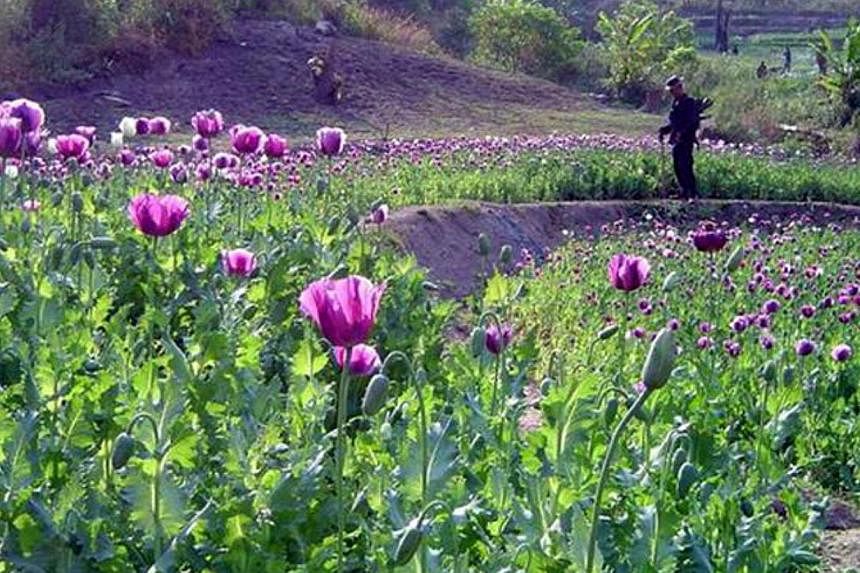BANGKOK (AFP) - Opium production in Myanmar fell by nearly a quarter this year, the UN said Monday, but the world's second largest poppy grower still faces a growing battle against drug use.
Lower poppy yields, slumping "farm gate" prices and more effective eradication of opium fields have squeezed production to its lowest level in eight years, according to a UN Office on Drugs and Crime (UNODC) report.
Production of dry opium is estimated to have dropped by 23 percent from last year to 670 tonnes, the study found.
Dry opium is the resin from poppy seeds, which is later processed into heroin and sold to booming export markets, including China, or to domestic users.
It will be the first time since 2006 that production has fallen, but Myanmar still ranks second only to Afghanistan in global opium production.
Regional and domestic demand for the drug is also surging, the UN said.
"Market demand (in Myanmar) is extremely high and it is rising... as the population goes up, affluence is going up, the market is stronger, traffickers are targeting it," UNODC regional representative Jeremy Douglas told AFP in Bangkok.
Opium production across the whole of the "Golden Triangle" - a remote, mountainous wedge of land joining Laos, Myanmar and Thailand - is expected to be worth around half a billion dollars (S$630 million) in 2014, according to the UNODC.
The study found much of the drug is smuggled to China, home to 1.3 million heroin users, but it is also increasingly flooding the domestic market in Myanmar's conflict-hit border zones - including Shan and Kachin states, where drug addiction is rife.
"You have the problem of extreme poverty in the Golden Triangle... oddly, opium farmers tend to make less than other farmers, but they don't have anything (else) to take to the market," Douglas said.
In Laos the land used to grow poppies nearly doubled to 6,200 hectares in 2014, but the UN said that rise may in part be accounted for by better reporting.
In the 1980s Myanmar was the world's largest producer of opium. It was overtaken in the early 1990s by Afghanistan, which now accounts for 80 percent of global production.
Myanmar's harvest will be worth an estimated US$340 million this year.
Experts say much of the cash will be funnelled to criminal networks in drug-producing areas including the northern state of Shan - home to the vast majority of Myanmar's crop.
The area is also home to several ethnic rebel groups who are widely believed to be involved in the drug trade.
The UNODC's Douglas said rebel activity complicated government plans to eradicate the drug.
"As long as people are producing (drugs) - and no one is disrupting what they are doing - you are going to have peace," Douglas said. "Going in and disrupting it is not in their (the government's) interest at the moment."
Myanmar, which emerged from decades of direct army rule in 2011, has scheduled elections for November next year. The government is desperate to sign a nationwide ceasefire to end several civil wars, which are in part fuelled by the drug trade.

